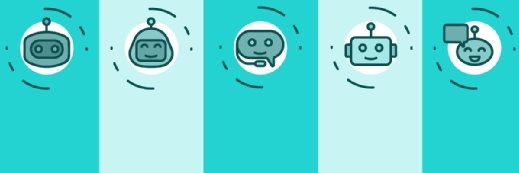
putilov_denis - stock.adobe.com
Compare Semantic Kernel vs. LangChain for AI development
Building a new application with generative AI? Compare two popular frameworks to decide which is best for your project.
Many organizations are building generative AI services to power use cases ranging from customized chatbots to business automation agents. But with numerous development frameworks available, deciding which to use can be challenging.
Two popular options are Semantic Kernel, an open source Microsoft SDK that lets users integrate various AI models into their builds, and LangChain, an open source framework for building applications powered by large language models. Because the two frameworks have similarities and differences in their features, strengths, weaknesses and surrounding ecosystems, teams choosing between them for a generative AI project will need to weigh the costs and benefits of each.
When to choose Semantic Kernel vs. LangChain
The choice between Semantic Kernel vs. LangChain depends on project requirements, preferred programming language, and desired level of integration and flexibility.
Compared with Semantic Kernel, LangChain has a much larger community, third-party tool ecosystem and set of integrations. That can benefit developers looking for broad out-of-the-box functionality and active support. But keep in mind that many of LangChain's integrations are built by open source contributions, meaning that they might not be consistently updated or maintained.
In contrast, Semantic Kernel's data sources and available integrations are much more Microsoft-centric, offering tight integration with Azure services and the .NET ecosystem. So, while its integrations are fewer overall, they're more likely to be reliably and consistently maintained.
In short:
- LangChain is better suited for projects requiring extensive tools and integrations, as well as for building offline generative AI services.
- Semantic Kernel is preferable for .NET ecosystem projects or those requiring a lightweight framework with more Microsoft-centric integrations.
Semantic Kernel vs. LangChain: Features and capabilities
| Semantic Kernel | LangChain | |
| GitHub stats, as of February 2025 | 22.9K stars, 2.6 million total downloads (up from 1 million in April 2024) | 99.6K stars, 27 million downloads per month |
| Core concept | Kernel | Chains |
| Automation | Planner | Agents |
| Custom components | Plugins | Tools |
| Programming languages | C#, Java, Python | JavaScript, Python, Java (through LangChain4j) |
| Language model support* | Amazon Bedrock, Anthropic, Azure AI Inference, Azure OpenAI, Google, Hugging Face Inference API, Mistral, Ollama, ONNX, OpenAI | AI21, Amazon Bedrock, Anthropic, Azure OpenAI, Cohere, Databricks, Fireworks, Google Vertex AI, Groq, Hugging Face, Llama.cpp, Mistral, Nvidia, OCI GenAI, Ollama, Together, Upstage, Watsonx, xAI |
| Vector store support* | In-memory vector store for testing and development, plus Azure AI Search, Azure Cosmos DB for MongoDB, Azure Cosmos DB for NoSQL, Elasticsearch, Java Database Connectivity, MongoDB, Pinecone, Postgres, Qdrant, Redis, SQLite, Volatile (In-Memory), Weaviate | Aerospike, Alibaba Cloud OpenSearch, AnalyticDB, Annoy, Apache Cassandra, Apache Doris, ApertureDB, Astra DB, Atlas, Azure AI Search, Azure Cosmos DB for MongoDB vCore, Azure Cosmos DB for NoSQL, BagelDB, Chroma, Clarifai, Couchbase, Databricks, Elasticsearch, Faiss, InMemoryVectorStore, Microsoft SQL Server, Milvus, MongoDB, PGVector, Pinecone, Qdrant, Redis, Weaviate |
| Monitoring and tracing | OpenTelemetry (using Console, Application Insights or Aspire Dashboard) | LangSmith, Portkey |
| Multi-agent framework | AutoGen | LangGraph |
*This list represents a selected set of the most popular options at press time; be sure to check tool documentation for a comprehensive and up-to-date list.
Semantic Kernel
Semantic Kernel is a Microsoft SDK available in Java, C# or Python, with C# offering the most comprehensive feature set.
Semantic Kernel's core features include the following:
- AI service connectors for integration with generative AI models.
- Enterprise services for telemetry and logging.
- Planning to orchestrate function calling.
- Plugins, or groups of functions.
- Vector stores for storing embedded data and performing similarity searches.
A major recent addition is Semantic Kernel's framework for building AI agents: Microsoft's open source AutoGen. This framework was previously separate -- and a popular choice for AI app development in its own right -- but Microsoft's goal moving forward is to merge its capabilities with Semantic Kernel.
Semantic Kernel has documentation available through Microsoft Learn websites and hosts community web meetings. However, much of the documentation and tutorials available use C#, with less support available for other languages.
Other development frameworks to consider
With the growing interest in generative AI, many app development tools and frameworks have cropped up. Beyond Semantic Kernel and LangChain, other popular tools include the following:
- Hugging Face Transformers.
- Keras.
- Prompt flow.
- PyTorch.
- TensorFlow.
LangChain
LangChain is a popular framework for creating generative AI applications using Python or JavaScript, with additional support for Java through LangChain4j.
LangChain's founders have also developed other frameworks, such as LangGraph for agent-based workflows, and LangSmith for monitoring and debugging generative AI applications. Despite the increased focus on AI agents and agentic workflows, LangChain's founders are adding new LangGraph features.
LangChain includes the following key features:
- Chat models for LLM integration.
- Document loaders for handling data in the LangChain data format.
- Retrievers for querying knowledge bases.
- Vector stores for data embedding and similarity search.
LangChain supports numerous LLMs, vector stores, document loaders and SaaS services, including Google, Microsoft 365 and Slack. However, the speed of framework development has left many integrations incompatible with LangChain's newer versions -- meaning that sometimes, to use a specific version of an integration, developers would need to use an older version of LangChain.
LangChain has an impressively active community, with many tutorials on YouTube and eLearning, and an active Discord server. However, official documentation is sometimes lacking due to the rapid development of new versions.
Marius Sandbu is a cloud evangelist for Sopra Steria in Norway who mainly focuses on end-user computing and cloud-native technology.








